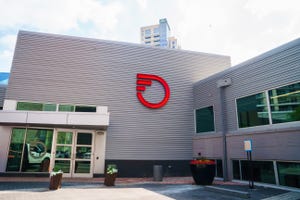HSDPA Speed, Lab Versus Real World
HSDPA Speed, Lab Versus Real World
January 2, 2006

Recently I complained about the inflated speed claims being made about a future version of EV-DO, (EV-DO Revision B). So it’s only fair to comment on the misleading speed claims coming out about HSDPA. While I am enthusiastic about the capabilities of both the major 3G technologies, whether EV-DO or UMTS/HSDPA, I think it’s important to understand the basis of the claims, and what can actually be expected in the real world. A case in point is Nortel’s announcement on December 22 about achieving a 3.6 Mbps HSDPA throughput rate using a card from European-based Option in a test conducted at Nortel’s research campus in Chateaufort, France. High Speed Downlink Packet Access (HSDPA) is the version of UMTS that Cingular is currently deploying.
Here’s the deal. The 3.6 Mbps number is real, but you as a user will never see it. It is based on using the highest order modulation available (16 Quadrature Amplitude Modulation), and five high-speed codes allocated to the same device. Even then, it is at the link layer, meaning that it does not take into account IP and TCP packet overhead, though this is likely less than 10%. It is effectively the capacity of most of the cell site directed at one user under optimal radio conditions. But even if you were the only user in that cell sector with an excellent signal, while the radio could deliver this throughput, the bottleneck in the real world is the backhaul connection to the base station, which is typically based on T1 circuits that are limited to 1.5 Mbps of throughput. I can guess that Nortel has a fiber connection to their test cell site in Chateaufort, but that’s not the real world, though to be fair, some cell sites are on fiber. But most are not.
The reason you’ll see actual throughputs in the 400 to 700 kbps, as quoted by Cingular, is two fold. One, as just mentioned, is the real world constraint of backhaul capabilities, which by the way is no different for Wi-Fi hotspots. The other is that multiple users will be active in the cell, sharing the radio capacity. So beware of the inflated speed claims. While they may represent the real capabilities of individual devices, and the theoretical capabilities of the technology, they will not necessarily be what you will experience.
You May Also Like










